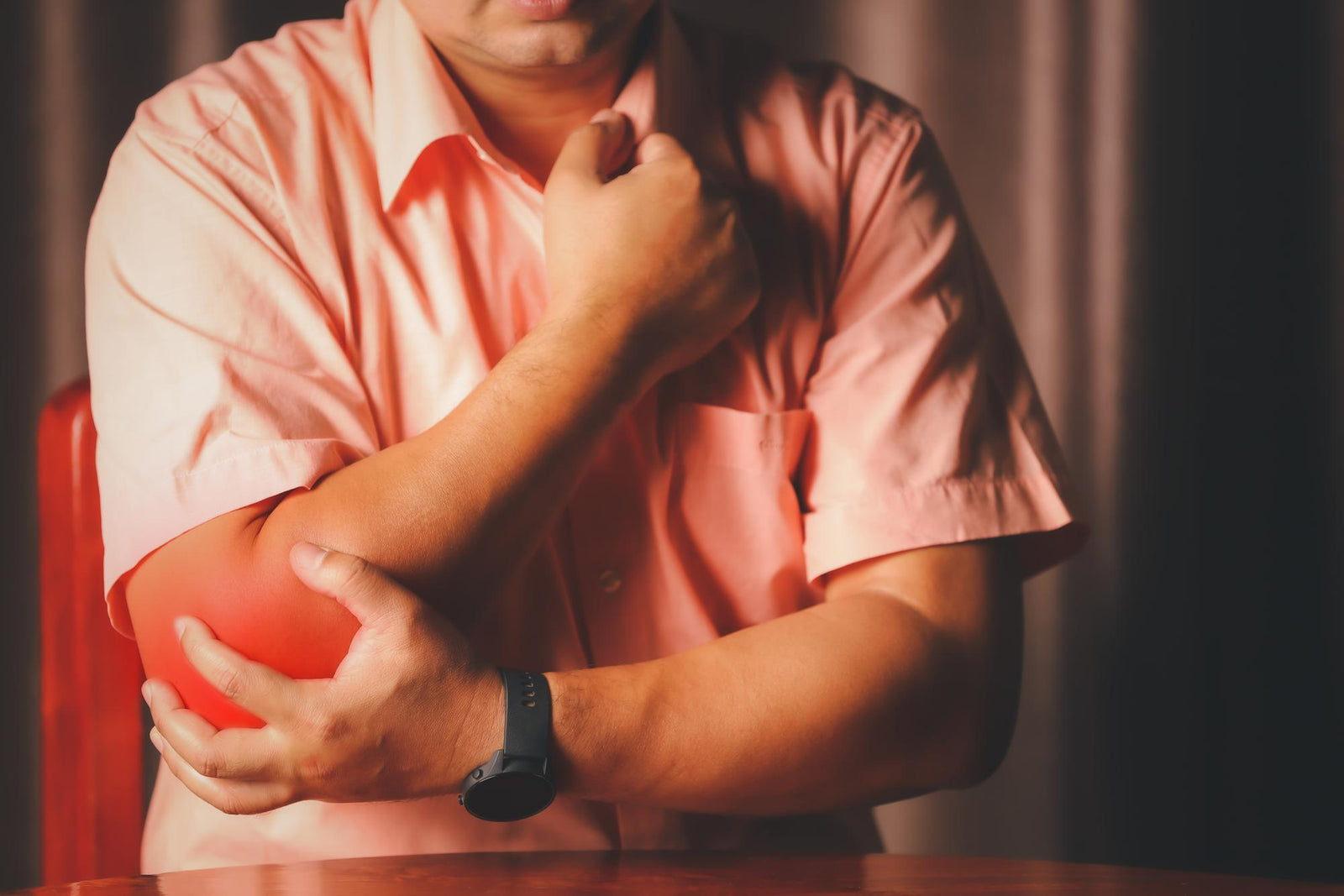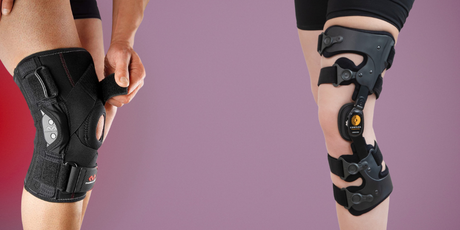Elbow pain

Pain and problems in the elbow are usually caused by overuse injuries with localised inflammation in the inner or outer tendon attachments of the elbow. The overload often comes from static monotonous work with the hand and fingers in one position for a long time or heavier repetitive work. Racket sports such as tennis and padel often give rise to tennis elbow, but the overuse injury is also common among craftsmen, such as carpenters and plumbers. There are also cases of elbow pain from static work at the computer, known as mouse arm. The phenomenon of golf elbow is very similar to tennis elbow with usually the left hand (for right-handers) and it is instead the muscle on the underside of the arm that hurts.
The elbow pads we have in our range are designed to locally support the elbow joint and have an anatomical design for locally increased compression. The compression in the elbow protectors supports the joint locally and generally increases circulation in the elbow joint, which is often experienced as direct pain relief. Many protectors also have relieving properties in the form of buckles and pads.
Inflammations of the elbow are often related to the bending and stretching muscles of the hand and fingers. For this reason, it can be useful to complement the elbow protection with a wrist guard.
WHAT DOES AN ELBOW PROTECTOR ACTUALLY DO?
Depending on the model and design, an elbow protector can have one or more different functions.
The primary functions of elbow pads are often categorised into the following product features:
Relief. A relieving elbow protector always has different relieving components, often called pads. A pad is usually a reinforcing relieving component that has the function of concentrating function to the correct muscle belly or tendon.
Stability. The stability of an elbow protector usually comes from the elbow protector's stabilising rails, which are normally made of metal and contribute to increased support and control of the elbow joint.
Protective.
Anti-vibration. An anti-vibration elbow protector reduces vibrations from the hand and wrist up to the elbow tendon attachment using a shock absorbing pad made of PU, the pad covers most of the forearm to best reduce muscle vibrations from the hand up to the elbow.
Movement limiting. A motion limiting elbow protector is designed to support and stabilise the elbow joint with a specific function to prevent overstretching, hyperextension in the elbow.
WHAT TO DO TO GET RID OF ELBOW PAIN?
Tennis elbow often goes away by itself over time, but there are several different ways to relieve tennis elbow to speed up healing. The earlier you address the problem, the faster the healing process. There are several different aids to effectively relieve tennis elbow in everyday life, in the workplace or during sports and exercise.
Here are some tips and tricks:
STOP DOING WHAT'S CAUSING THE PAIN
If the tennis elbow has been caused by a clearly identified situation e.g. work situation or intense tennis playing, abstinence from intense pain is the first natural step for tennis elbow. Abstinence from repeated heavy loads that can negatively affect the problem.
GET A WRIST SUPPORT
Given the involvement of the wrist in the cause of tennis elbow, a wrist support is often seen as a very effective relief for tennis elbow. The wrist support places the wrist in a more favourable position for relief of tennis elbow. The wrist support can also be used at night to effectively counteract pain caused by sleeping with a bent wrist. A wrist support can also be used after an injury for preventive purposes and during rehabilitation of the tennis elbow.
STRETCHING
Stretching is often an effective way to strengthen the forearm muscles and also improve the flexibility of the muscle with the intention of reducing the load over the inflamed tendon attachment. Stretching of the tennis elbow should not cause pain during exercise and should be performed in a gentle and controlled manner. A physiotherapist is often very good at designing individual rehab and exercise/stretching programmes in line with your unique needs.
THINK ABOUT ERGONOMICS
Adapt the workplace to prevent problems. Inspecting posture, equipment, loading, misloading and other work-related environments can save a lot of time and reduce the risk of long-term recurrence.











